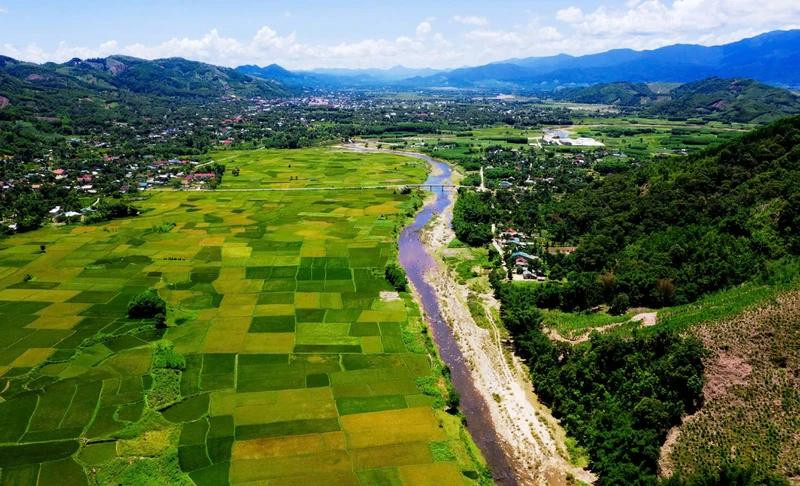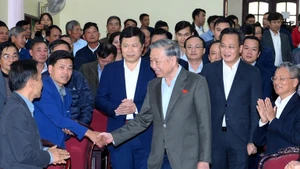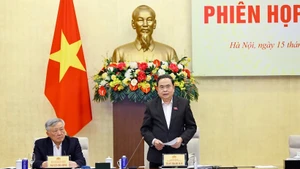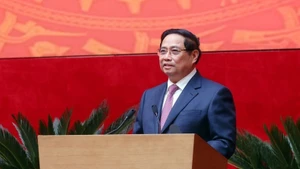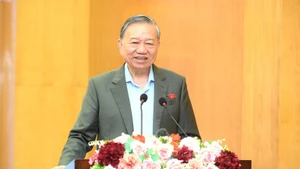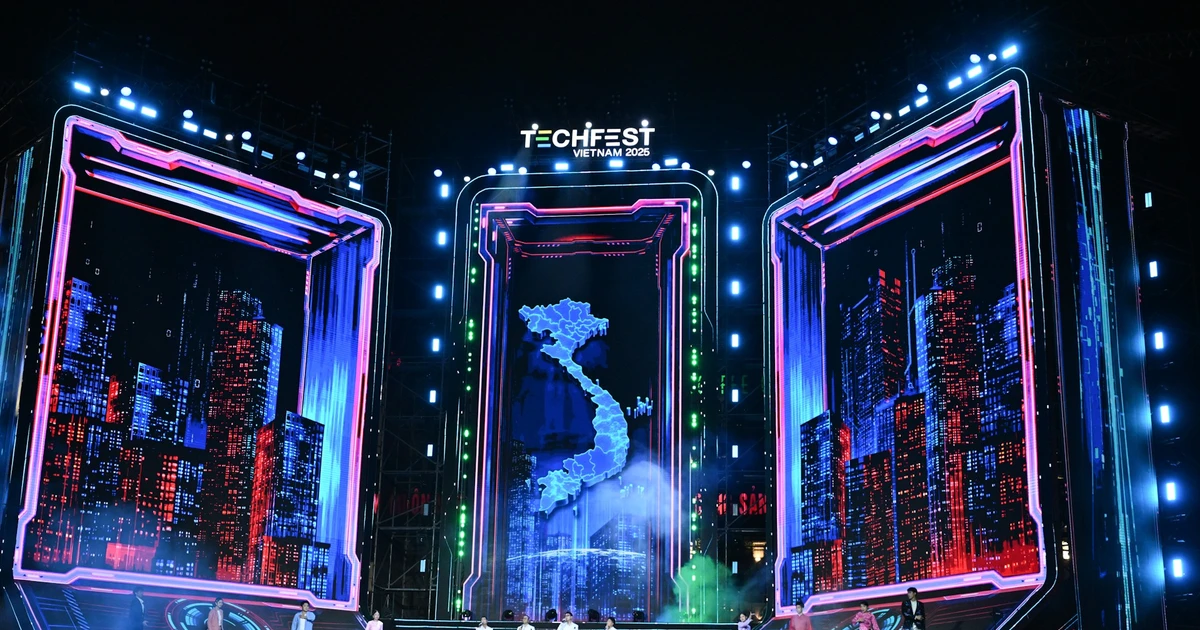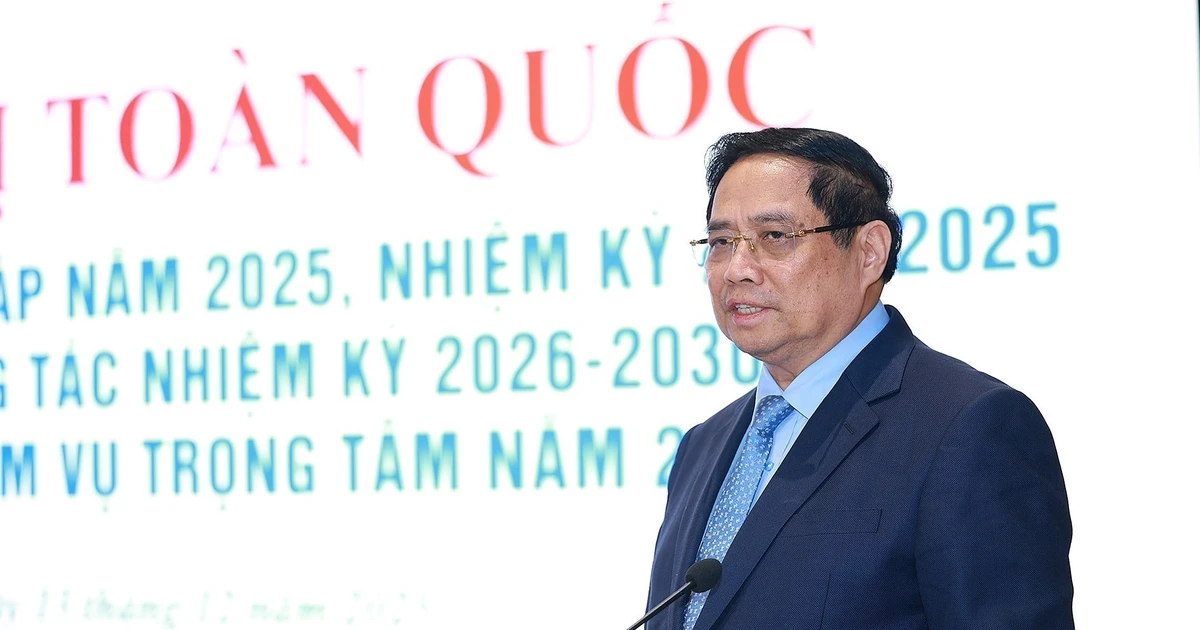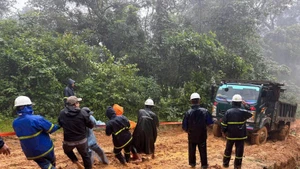In Hong Bac Commune, where the mighty A Biah Hill stands, the once rugged red dirt roads have given way to smooth concrete paths, leading to prosperous villages. A Biah Hill has not only emerged from the past but now stands tall as an enduring symbol of the resilience of A Luoi’s borderlands. In this place every stone, every blade of grass bears witness to the stories of patience and courage of the Vietnamese soldiers and people.
A Biah – The “Hamburger Hill”
Time may have transformed A Biah’s landscape, but for those who lived through its heroic days, its memory remains vivid. Though the sounds of bombs and bullets are long gone, standing atop the wind-swept hill, one can still almost hear the rhythmic march of soldiers past. This piece of history, both painful and glorious, remains—a poignant reminder that the peace we enjoy today was built upon the sacrifices of those who came before.
A Luoi—the western frontier of Hue City—was once a fiery battlefield. Located on the vital Ho Chi Minh Trail, it became a relentless target of enemy attacks aiming to sever the north-south supply route. The enemy deployed every means to halt the brave convoys and soldiers trekking through forests and rivers toward the front lines.
The fiercest battle occurred right on A Biah—Hill 937. For ten days and nights, from May 10 to 20, 1969, the Liberation Army of South Vietnam, alongside local militia and guerrilla forces of the Pa Co, Ta Oi, Co Tu, Pa Hy, and Van Kieu ethnic minority groups, stood their ground against the elite 101st Airborne Division of the U.S. army. After brutal hand-to-hand combat and fierce contests for every inch of ground, our forces emerged victorious. The Americans dubbed this hill “Hamburger Hill”—a name haunted by its grim legacy. A documentary film would later attempt to portray the ferocity of this battle, yet even it fell short of capturing the true spirit and sacrifice of the soldiers who fought on the peak of A Biah.
At the exhibit house at the foot of the hill, old artefacts still tell the story of the past: fragments of aircraft, rusted shell casings, and faded photographs. Each item carries a fragment of war’s memory—of pain and sacrifice. Most moving are the stories of unity between the military and the people of A Luoi. In those trying times, it wasn’t just weapons that secured victory, but also the silent hands carrying baskets of ammunition, handfuls of rice across streams, and sturdy feet transporting the wounded through forests to the rear. These humble figures have etched their names into the golden pages of national history.
Hoang Xuan Tinh, 86, former militia commander of Hong Bac Commune, once led guerrilla forces in the battle of A Biah. Despite his age, his eyes still shine when he recalls the A Biah victory and the comrades who laid down their lives for national liberation. “We fought not just for our homeland, but for our country, for the future of later generations,” he shared, his voice choked with emotion as he remembered fallen comrades.
One story he is most proud of is how the guerrilla fighters of Hong Bac helped transport weapons and supplies along perilous routes. “Despite incredibly difficult conditions, the guerrillas ensured every bit of equipment, rations, and gear reached our soldiers on time so that combat operations could proceed smoothly,” he recalled.
Even the harshest attacks could not break the will of the people here. “Every step forward was a battle of unyielding resistance against the enemy. We knew that no matter how hard it was, victory would belong to this indomitable nation, which never bows before any enemy”
Life revitalisation
The war ended, but A Luoi was left with deep scars. From hardship, it has slowly but surely been reborn—a land full of vitality.
Wide concrete roads, sturdy new houses, and orchards heavy with fruit at the foot of A Biah all stand as testaments to the tireless efforts of the local people.
The younger generation in A Luoi is continuing the legacy in their ways. Dr Peke Chung, Head of the Hong Bac Commune health station, is one shining example. Devoted to her profession, she also studies and implements sustainable agricultural models, helping local households grow economically. For her, earning a living is not just for her family—it’s also a way to contribute to the collective development of her homeland.
A Luoi’s progress is not only thanks to its people but also the dedicated investment and attention from local authorities. Nguyen Manh Hung, Deputy Secretary of the A Luoi District Party Committee and Chairman of the District People’s Committee shared: “We are continually promoting high-tech agriculture, eco-tourism development, and attracting investment into clean agricultural sectors… These projects have created job opportunities and improved incomes for the people.”
Thanks to this united effort, A Luoi officially emerged from the list of national poor districts in July 2024—a historic milestone nearly 50 years after liberation.
Half a century after the war, A Luoi wears a new, vibrant face. One day soon, A Biah Hill and this land will become a major tourist destination, a place to educate future generations about sacrifice, strength, and national pride.
